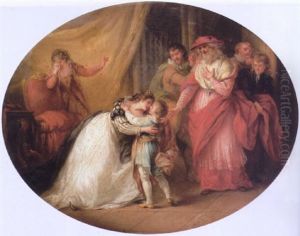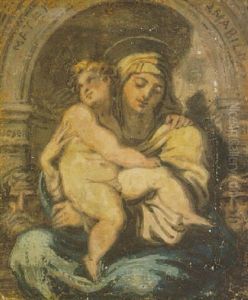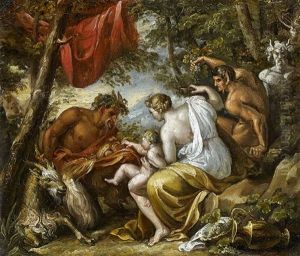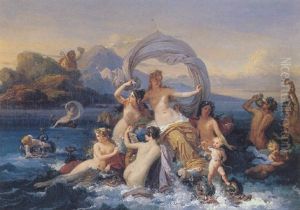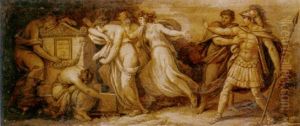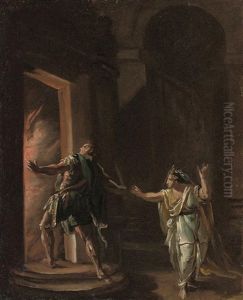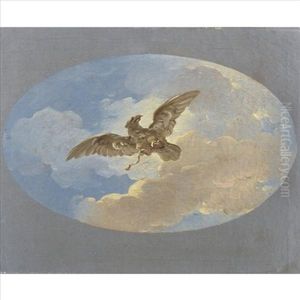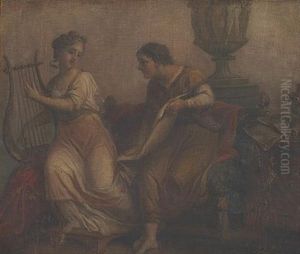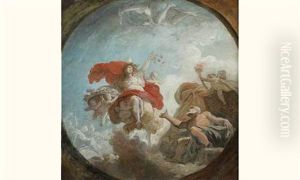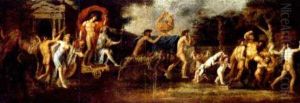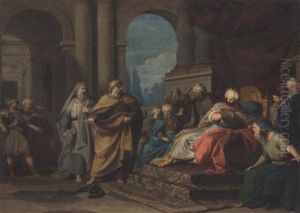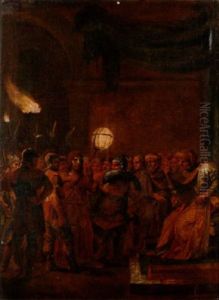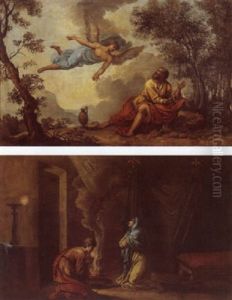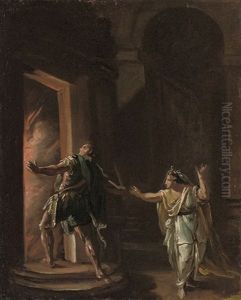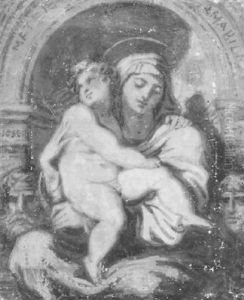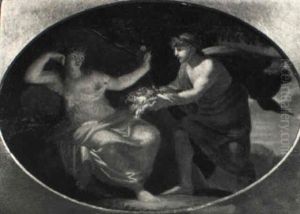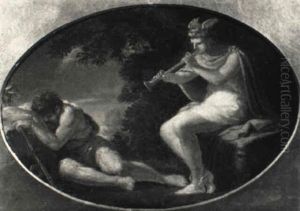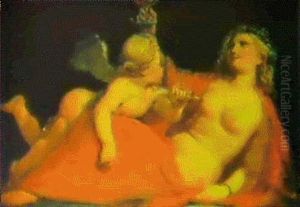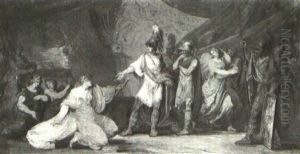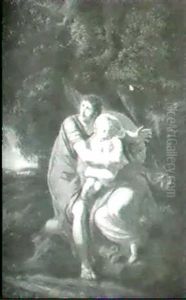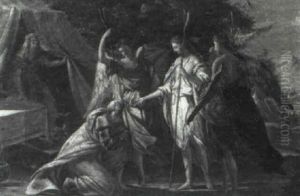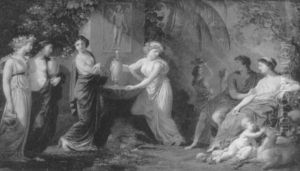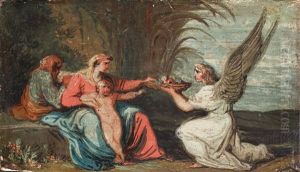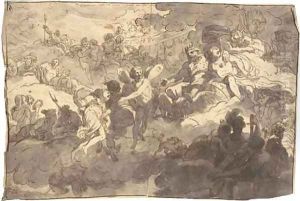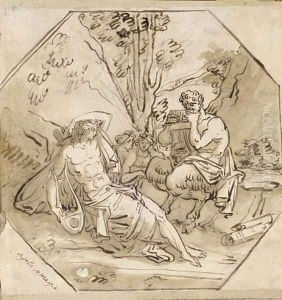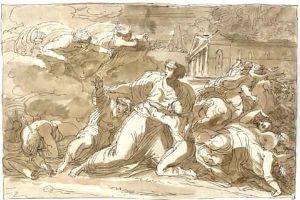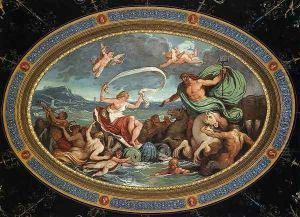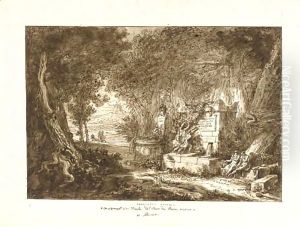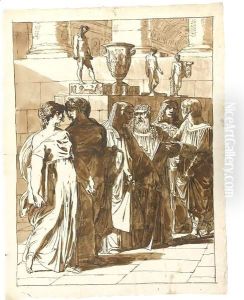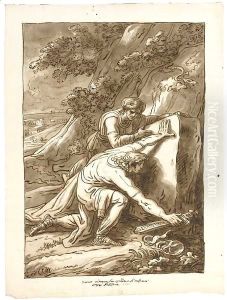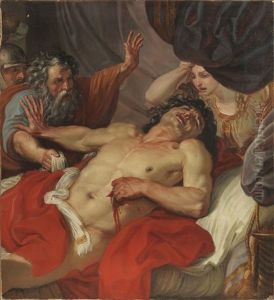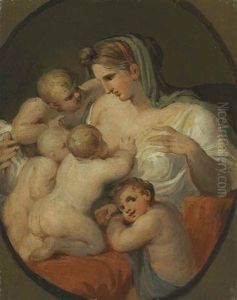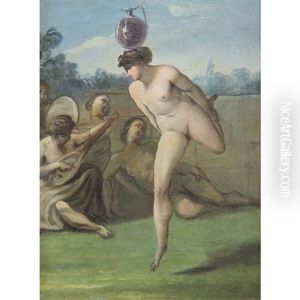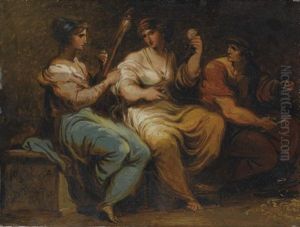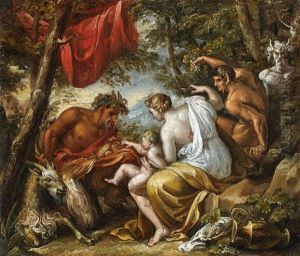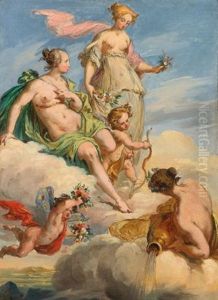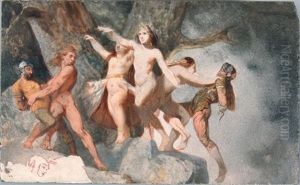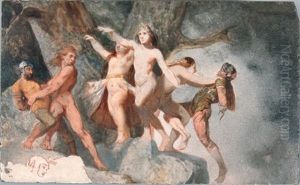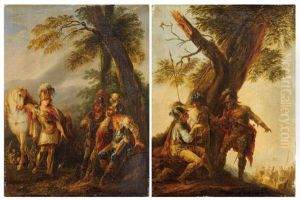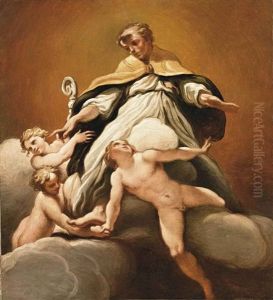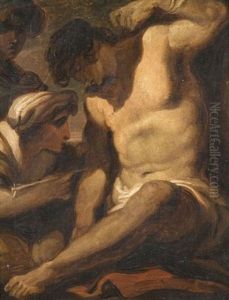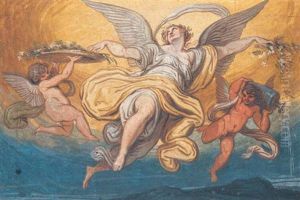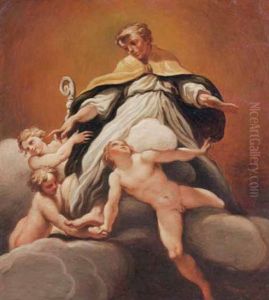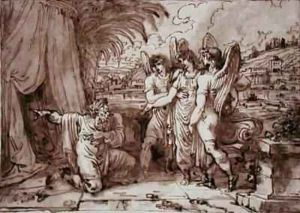Felice Giani Paintings
Felice Giani was an Italian painter and decorator, born on January 8, 1758, in San Sebastiano Curone, a small town in the province of Alessandria, Piedmont. He was a prominent figure in the Neoclassical movement, which was characterized by a return to the simplicity and grandeur of ancient Greek and Roman art and architecture. Giani received his initial training in Pavia and then moved to Bologna to continue his studies.
In Bologna, Giani was influenced by the works of the Carracci family and the painter Domenichino. He was also inspired by the archaeological discoveries of Herculaneum and Pompeii, which were instrumental in the development of the Neoclassical style. Giani's talent was recognized early on, and he was awarded a stipend to travel to Rome in 1780 to further his artistic education.
In Rome, Giani became associated with a group of artists who were keen on reviving the classical past, including the German artist Johann Joachim Winckelmann who was a prominent figure in the classical archaeology field and an important theorist of Neoclassicism. Under the influence of Winckelmann’s ideas, Giani's work began to exhibit the clear, strong lines and serene compositions typical of the Neoclassical style. He worked on several important commissions in Rome, including frescoes for the Palazzo Altieri and the Villa Borghese.
Giani's reputation grew, and he received commissions from the Italian nobility and foreign patrons, which included the design of decorative schemes for palaces and villas. He was known for creating grandiose frescoes with mythological and historical themes. One of his most significant projects was the fresco decoration of the Palazzo Milzetti in Faenza, which is considered one of the finest examples of Neoclassical interior decoration in Italy.
Throughout the Napoleonic era, Giani enjoyed substantial patronage, which included working on the decoration of the Quirinal Palace in Rome and the creation of Napoleonic allegories. After the fall of Napoleon, Giani's style remained in demand, and he continued to work on important projects, including the decoration of the Palazzo Ducale in Genoa.
Felice Giani passed away on September 5, 1823, in Rome. His legacy is marked by the influence he exerted on the Italian decorative arts and his role in propagating the ideals of Neoclassicism. His work is preserved in various museums and collections, showcasing the elegance and classical refinement that were hallmarks of his style.
